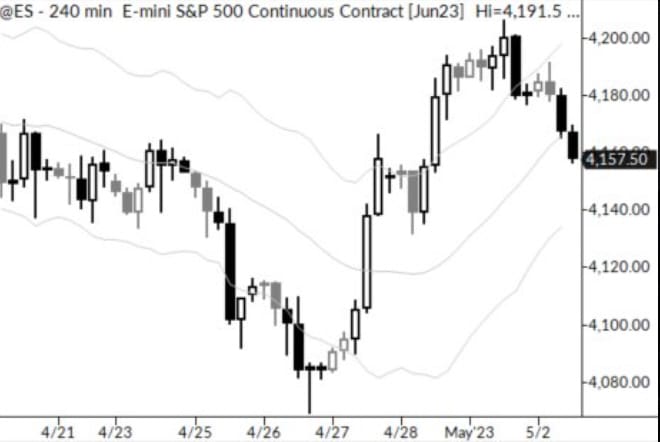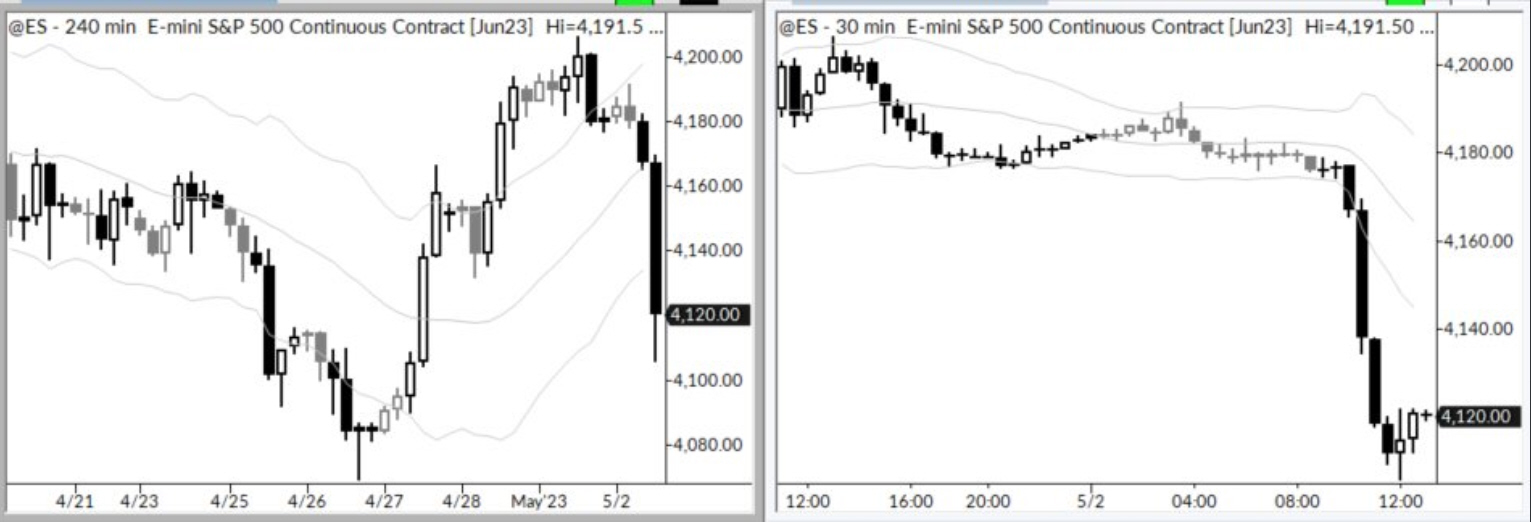The Power of the Snap Pullback

Recently, I posted a tweet about a great example of a snap pullback (formerly known as the "Anti") on the 4H S&P futures. This sparked some interesting questions and discussions in our MarketLife Discord community, which has become a valuable resource for developing traders. In this post, I'll address the questions raised, and share some insights about snap pullbacks.
The Tweet that Sparked the Discussion
Here's the tweet that initiated the conversation:
"Great example of a snap pullback (i.e., "Anti") on the 4H S&P futures. This particular trade is over, but we might get some more juice out of shorts today."
https://twitter.com/AdamHGrimes/status/1653407979251589125
One of our Discord members, Mirko, raised some valid questions about the setup, as he had difficulty seeing it clearly in this particular case.
Ok, I understand the setup, but in this case is not clear to me. We have overextension in the price, then strong movement in the opposite direction. But it is only one red bar and it does not make any kind of minimum the MACD. I general it is difficult for me to see it clearly
In 1h the situation seems clearer to me. It is a setup that I usually operate but in this case I would never have done it and I would like to know where my perception error is.
Evolution: Anti to Snap Pullback
The term "Anti" has been around for a while, originating from Linda Raschke's 1996 book, "Street Smarts." The concept initially relied on using an indicator to identify points where short-term momentum was against (i.e., “anti”) the longer-term momentum, which itself had just turned.
Over time, my approach has shifted towards a reduced reliance on indicators, focusing more on the underlying pattern of the trade. This does not invalidate the use of indicators in any way! (Read that last sentence again.) I’ve also found that, if you understand what this trade is really showing, you’ll find examples that are not captured by an indicator. This particular example is one of those cases.
Snap pullbacks represent the first "pause" following a break of trend momentum. These trades tend to see sharp and fast resolution, hence the name "snap pullback." Going forward, we'll be using this term.
Addressing Mirko's Questions
Mirko's questions highlight the importance of understanding that there are multiple ways to interpret a market. He trades the setup using the MACD indicator, which works well for him. However, there's another way to see the trade without relying on the MACD.
Key Factors to Consider
- Swing traders using 4H charts face the challenge of uneven bar distribution, with periods of low overnight activity. This affects indicators and calculated measures.
- Reversals often occur at certain times of day.
- The market's proximity to a measured move objective and signs of topping based on price action are also crucial factors.
With all of this as context, we then turn our attention the character of the bounce. I’m looking for a “reluctant bounce” to show that the edge is still leaning toward sellers, and that’s what we got here.
With all of that behind us, there was plenty of reason to look to enter on a breakdown, and the chart shows the completed trade with a solid MMO target reached. However, the market was not done! Take a look at the chart below that shows the further aftermath, and many of you know we saw more downside extension that week.

Key Takeaways
Grasping the underlying purpose of a pattern is more important than its specific details.
Indicators can be helpful, but understanding what drives them is crucial. Aim to look beyond the patterns of the indicator.
It's perfectly fine to define your own rules and conditions for trades. Embrace the fact that different traders may see the market differently.
Join the MarketLife Discord Community
Our Discord community is free and open to everyone, offering a space for discussions like this one. To join, simply sign up for a free MarketLife account using this link, and we'll see you in the Discord!



